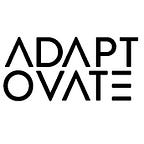3 Whys for an Agile Operating Model — ADAPTOVATE
Authored by Katy Hughes, Senior Consultant, Jian Lee, Associate,
Alex Rebkowski, Partner and Managing Director, ADAPTOVATE
BUSINESS OPERATING MODEL PRACTICE AREA
Have you seen the benefits from piloting a few agile teams, but aren’t sure what’s next? This article outlines three benefits to businesses that have taken the plunge to transform into an Agile Operating Model:
- Nimble customer focused teams provide the ability to pivot at scale
- Flexible career paths engage and attract the best talent
- Sustainable delivery and alignment across the organisation
Let’s explore…
Nimble customer focused teams provide the ability to pivot at scale
We often hear businesses talking about ‘customer focus’, but what does it really mean to be authentically customer first across the organisation?
Truthfully, there are many things an organisation can do to become more customer centric, but, only the bold and brave take the leap toward truly putting the customer at their core and realigning at scale to their customers’ needs.
ADAPTOVATE’s global experience demonstrates that organisations that have small, cross functional teams aligned to customer needs create deeper relationships, drive customer loyalty and have the ability to rapidly pivot to changing market conditions.
So, how does it work?
An Agile Operating Model aligns an organisation’s structure to customer needs. It creates smaller, more nimble squads who own a customer journey end to end, allowing them to deliver the value that customers need, when they need it. Squads have the ability to share customer data, create consistent experiences and deliver according to what the customer really values.
During the COVID-19 pandemic, an agile operating model allowed a large Australian retail grocer to quickly respond to changing conditions and customer demands by shifting the priorities of a small number of teams to deliver on their COVID-19 response, whilst still continuing to deliver on strategic priorities.
As this method of delivery across the organisation allows customers to experience a consistently great experience at every interaction, organisations can build and sustain long lasting customer loyalty. With a common way of working, and end to end accountability; employees are driven to provide an exceptional experience for customers.
Flexible career paths engage and attract the best talent
Traditionally, as we climb the ladder in an organisation, employees move into managerial roles (of varying degrees), moving further and further away from the doing. But what about the employees that don’t want to become managers?
An agile operating model embraces specialisation as well as leadership. It understands that not one career trajectory suits all and respects both skill mastery and management as equal paths to the top. Allowing employees to hone their skill mastery keeps employees engaged and retains IP within an organisation.
Through role simplification, limited spans and layers and clear career paths for advancement, employees are able to have absolute clarity and ownership over their career paths.
Focusing on strengthening and supporting team capabilities allows all employees to work with a sense of purpose with an understanding of how their work fits into the broader strategy of the organisation. Organisations that have embraced this idea have seen longevity and increased engagement in their employees as well as attraction of top talent fully committed to their success.
Sustainable delivery and alignment across the organisation
As the Agile operating model now has nimble squads fully responsible for outcomes, we have less handovers and reduced friction when delivering an initiative. It allows the organisation at scale to improve speed to outcome using the same resources. With minimal complexity in the new operating model, it allows organisations to rapidly grow, scale and onboard new teams if the organisation has potential for rapid growth.
The Agile Operating Model positions people within Tribes and Chapters, where a Tribe delivers work and a chapter builds capability. Each squad within a Tribe has a clear and specific mission, where they are fully responsible for delivering an outcome. They are multidisciplinary, made up of the people aligned on their mission and delivering with autonomy. We have previously authored a post going into more details on Tribes, Chapters and Squads which can be found here.
We utilise alignment mechanisms such as Quarterly Delivery Cycles (QDC) to increase transparency by sharing the problem we’re solving, and the outcome we will achieve when delivering the work. Alignment mechanisms ensure that the entire organisation is working on the highest priority and allows the organisation to become more intentional and pivot as appropriate.
Through transparency and alignment, we also reduce duplicated efforts and inefficiencies across the organisation, with a single point of reference when enquiring about a piece of work. This new operating model improves best practice sharing and ultimately promotes delivering quality work sustainably.
Beat the competition
Above and beyond the 3 reasons articulated above for an Agile Operating Model, a successful implementation of this will allow us to stay relevant within the fast moving market we find ourselves in; and ultimately, beat our competition.
Originally published at https://adaptovate.com on May 25, 2021.
